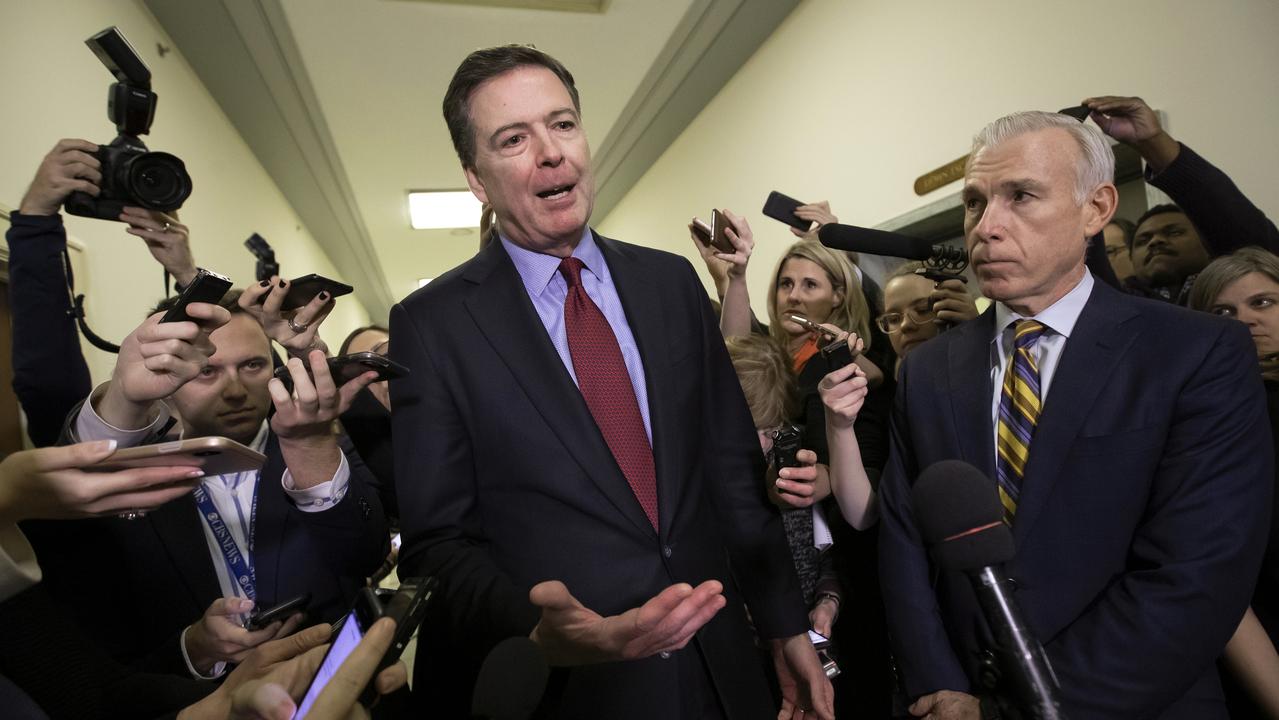
For some, last weekend’s attack in Orlando, Florida, a week into Ramadan and two weeks after Islamic State leaders announced a global campaign for the Islamic holy month, was part of a wave of attacks by self-radicalised individuals and terrorist cells, inspired or directed by Islamic State.
For others, the mass shooting at a nightclub frequented by Orlando’s gay and lesbian community, a fortnight into LGBT Pride Month, fits a pattern of gun violence exacerbated by homophobic rhetoric and appalling ease of access to military-grade weaponry for American civilians.
In the immediate aftermath of the attack, conservatives tended to adopt the first interpretation; indeed, Republican presidential nominee Donald Trump tweeted a version of it while the attack was still in progress. Later, congratulating himself on his foresight, he called for an expansion of his proposed ban on Muslim immigration, an idea he first advanced after the Paris attacks in November last year. This would have done nothing to stop the Orlando attacker, Omar Mateen, a US citizen by birth.
Liberals followed the second interpretation. President Barack Obama called the attack a hate crime, saying: “The shooter was apparently armed with a handgun and a powerful assault rifle. This massacre is therefore a further reminder of how easy it is for someone to get their hands on a weapon that lets them shoot people in a school, or in a house of worship, or a movie theatre, or in a nightclub.”
None of the other shootings the President referenced — the Sandy Hook school shooting in Connecticut; the Emanuel African Methodist Episcopal Church massacre in Charleston, South Carolina; the Aurora cinema shooting in Colorado — were Islamist terror attacks, indicating his framing of Orlando in a domestic gun violence narrative, rather than national security.
Other Democrats followed Obama’s line, calling for enhanced background checks, assault weapon bans and barring people convicted of hate crimes or whose names appeared on terrorism watch lists or no-fly lists from buying guns. This, too, would have done nothing to stop Mateen, who passed many background checks through the years, was authorised to carry weapons in his job as a security guard, had no criminal record and was not on a no-fly list.
Orlando doesn’t really fit either framework. It’s risky to comment on a continuing investigation, but what we know so far paints a more complex and troubling picture than these responses suggest.
Mateen called 911 and pledged allegiance to Islamic State during the attack. He telephoned a news channel to announce his affiliation with Islamic State and told hostages the attack was in retaliation for US bombing in Afghanistan. Law enforcement reported that he shouted “Allahu Akbar” (God is Great) during his gunbattle with police, and Islamic State’s Amaq media bureau claimed responsibility a few hours later.
All this would seem to leave little doubt that Mateen’s attack was religiously inspired, carried out by a radicalised Muslim and designed to terrorise and punish civilians for their government’s actions — the definition of a terrorist attack.
The attack also matched the pattern of lone wolf or small-group attacks in the US, inspired or directed by terrorist groups including Islamic State, al-Qa’ida and the Pakistani Taliban. These include attacks in Garland, Texas, and Chattanooga, Tennessee, as well as San Bernardino, California, last year, along with an attempted attack in New York in 2010 and the Fort Hood massacre in 2009.
But Mateen also had boasted to co-workers of ties to al-Qa’ida (the deadly rival of Islamic State) and Hezbollah (a Shia group fighting al-Qa’ida and Islamic State), suggesting his grasp of Islamic doctrine and terrorist organisation was shaky at best. And Amaq’s claim gave no information beyond what was available from news media — unlike the Paris attacks, when Islamic State quickly issued a claim that included previously unknown details.
Thus, it seems unlikely that this attack was organised or sponsored by Islamic State, though Mateen seems to have been radicalised by Islamic State materials online. Likewise, Mateen’s father, Seddique Mir Mateen, was the source of media reports that his son was motivated by homophobia, triggered by the sight of men kissing.
But witnesses quickly appeared to claim Mateen was a regular at the nightclub he attacked and had been active on gay dating apps and chat rooms. A male former classmate claimed Mateen was homosexual, frequented gay clubs and “asked him out romantically”. Mateen’s first wife, Sitora Yusufiy, also alleged he was homosexual and that she left him because he was violent and controlling.
Thus an alternative narrative — of a sexually confused, violently unstable, closeted man attacking a prominent gay landmark — quickly emerged. The truth may lie somewhere in between, but these possibilities are not mutually exclusive. It’s entirely conceivable Mateen was mentally unstable and politically motivated, a self-loathing homophobe and someone who found redemption through radical jihadist violence.
Mateen’s father — who made pro-Taliban propaganda broadcasts to Pashtun diaspora audiences in Europe and North America, and said after the attack that “God himself will give punishment for homosexuality, it is not for people to decide” — may have insight into his son’s mental state.
Mateen’s second wife, Noor Salman, who helped him buy ammunition and drove him to the nightclub on what may have been a reconnaissance trip, is now under investigation as an accessory to the crime. She allegedly tried to talk Mateen out of the attack but didn’t report anything to police.
Using an Australian example, there seem to be at least a few parallels between Mateen’s case and that of Man Haron Monis, the Lindt cafe gunman, who was psychologically disturbed and politically radicalised, changed his religion from Shia to Sunni a week before his attack, experienced psychotic episodes, had been charged with more than 40 counts of sexual assault and had been arraigned as an accessory to the murder of his former wife.
Monis seems to have been a deeply flawed individual who sought to dignify his criminal acts and personal failures by linking himself to the “heroic” violence of Islamic State. Mateen may have been working out his personal grievances and identity crises through violence while seeking to self-dramatise as a jihadi martyr.
There’s one glaring difference: Monis had a 50-year-old pump-action shotgun, a sporting weapon acquired on the “grey market” and cut down by an amateur. His weapon held three rounds and he killed only one person.
This is in no way to minimise the horror of Monis’s attack, merely to point out the difference that access to military-grade weaponry makes. Mateen carried a Glock automatic pistol with a 17-round magazine, plus a Sig Sauer clone of the popular AR-15, itself a semiautomatic version of the M-4 carbine carried by troops in Afghanistan and Iraq. The AR-15 typically has a magazine capacity of 30 rounds but anything up to 100-round drum magazines can be purchased, easily and legally. It’s unclear how much ammunition Mateen had, but his ability to turn such high-grade firepower on a nightclub crowded with hundreds of people gave his attack a dramatically higher level of lethality.
FBI director James Comey, describing his agency’s investigation of Mateen in 2013-14, pointed out that, having investigated Mateen’s behaviour (going so far as to use a confidential informant and bringing him in for questioning several times), FBI agents found no evidence he was more than a poseur. The investigation was closed and Mateen was not subjected to continuing surveillance, in part because the FBI lacks funding and personnel to keep tabs on every individual who has been suspected of terrorist involvement, in part because this would be a profound breach of the civil liberties of people whom investigators have cleared of wrongdoing. It’s hard to disagree with Comey’s reasoning here, whatever the consequences in hindsight.
For her part, Democratic presidential nominee Hillary Clinton, striking a more balanced note, condemned the attack as an “act of terrorism” by “a madman filled with hate, with guns in his hands and just a horrible sense of vengeance and vindictiveness in his heart, apparently consumed by rage against LGBT Americans — and, by extension, the openness and diversity that defines our American way of life”.
She called for stronger military action against Islamic State in Syria and Iraq, a whole-of-government taskforce to stem the flow of foreign fighters to and from the Middle East, and “hardening our defences” through an “intelligence surge to bolster our capabilities across the board, with appropriate safeguards here at home”.
It is unclear how any but the last of these proposals would have helped stop Mateen. And this, perhaps, is the most troubling aspect.
After the deadliest mass shooting in US history, which also happens to be the most lethal terrorist attack on US soil since 9/11, and clearly directed against gays and lesbians (a group whom Islamic State executes in Syria and Iraq by throwing them from buildings), US leaders are so entrenched in partisan positions on LGBT rights, gun control, surveillance, homophobia, Islamophobia and immigration, so intent on semantic arguments over terms like hate crime and radical Islamic terrorism, that their responses could have been scripted ahead of time.
This is not unique to the US. Access to high-powered weaponry is easy in much of the world; the Paris and Brussels attackers used similar weapons (with the addition of explosive vests) in countries with far tougher gun laws than those of the US. And any individual with an internet connection and a targetable set of psychological, sexual and social vulnerabilities can be radicalised and mobilised in a startlingly short time (hours to days rather than months or years).
The harsh reality is, given the threat environment, such attacks or attempted attacks are a near-certainty in many Western countries. That doesn’t mean there’s nothing we can do to reduce their impact or to improve resilience in responding to them.
The architectural design of public places — nightclubs, cinemas, shopping centres, theatres, streets, airports — can be modified to make it harder to launch bombings or ground assaults, or to corner and trap large numbers of people.
Engagement programs (online and on the street, organised and run by communities) can make allies of families and social networks around vulnerable individuals, identifying and removing negative influencers, as has been done successfully by anti-violence programs such as Cure Violence.
Training in how to survive a mass shooting or hostage event can become as commonplace as a fire drill in an office building or swimming safety at pools.
Police can be trained and equipped for the urban siege — the seize-and-hold events that increasingly dominate terrorist methodology — to handle multiple simultaneous active shooter incidents, to plan for ambushes and improvised explosive devices.
Intelligence services can focus on earlier detection of those identified as vulnerable individuals, preventive interventions and community partnerships.
These initiatives are happening in many countries, along with more controversial efforts such as mass surveillance, ubiquitous closed-circuit TV, expansion of undercover policing in at-risk communities and enhanced scrutiny of immigrants. But they come at a cost: expense, inconvenience and, most important, the risk intrusive security could destroy the openness and freedom of the societies it is designed to protect.
Thus, the most urgent need is for an informed public debate on the trade-offs between privacy and security, prevention and resilience, and domestic counter-terrorism versus the international campaign against groups such as Islamic State. But none of this can happen while political leaders remain captured by partisan talking points. Forty-nine dead and 53 wounded Americans in Orlando, along with their families and their communities, deserve better.




To join the conversation, please log in. Don't have an account? Register
Join the conversation, you are commenting as Logout